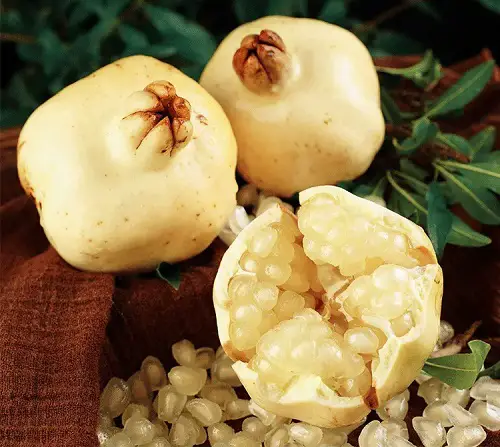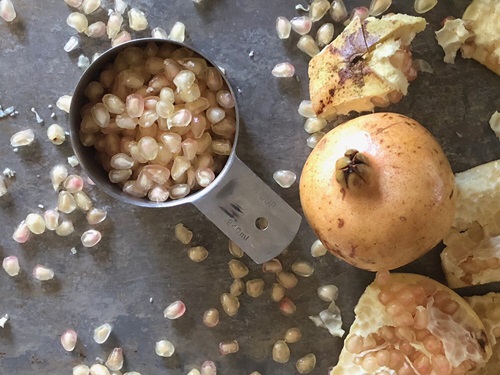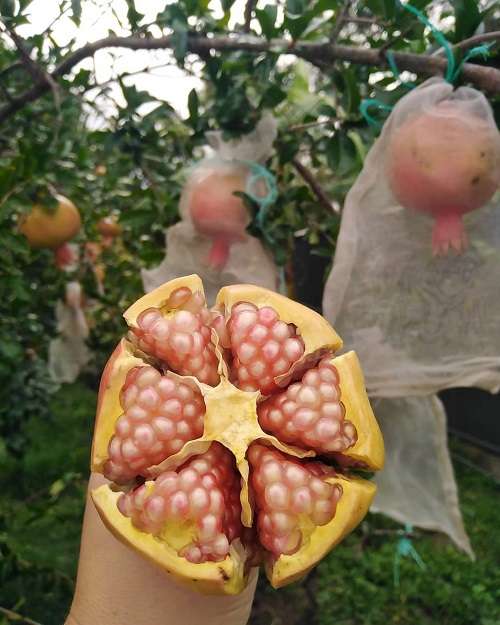White Pomegranates are not as common as their red counterparts, making them quite compelling to grow!

White pomegranates are not actually “white” – they have a muted red or orange hue, which makes them appear paler in comparison.
Everything about Growing a Pomegranate Tree in a Pot
What Makes Pomegranates White?
When we hear pomegranates, we assume they are red, right? Well, the white ones result from the fruit’s genetic makeup – responsible for pigments and the concentration of anthocyanins. All these give the fruit its color, which can be red, green, orange, or white.
White pomegranates have a very low concentration of anthocyanins, which results in their paler and white hue.
Best Varieties of White Pomegranates
- Ambrosia: These fruits have pale pink to white seeds with a mild flavor.
- Kashmir Blend: Has an exceptional blend of sweet and tart flavor with a creamy-white to light pink seed color.
- Ariana: It has soft, white arils and a sweet taste.
- Sakerdze: Native to Georgia, this one has white seeds and a less acidic flavor.
Differences Between Red and White Pomegranates
The first obvious difference is the color of the arils (Seeds), where the white ones are almost translucent. The second difference is the taste – white pomegranates are less acidic and tarty, which makes them taste sweeter than red ones – which have a more tangy and sharp flavor profile.
The texture of white pomegranate is also softer and less crunchy.
White Pomegranate Interesting Facts
- The taste profile (mild with less tartiness) makes it a popular choice for cocktails and pomegranate wine.
- It has as many antioxidants as red ones and is a great source of fiber, vitamins C and K, along with potassium.
- White pomegranates are less widely cultivated and distributed than red pomegranates, making them a distinct species.
- They can be found in specialty and gourmet grocery stores rather than traditional ones.
Quick Growing Tips for White Pomegranates
1. Climate
These fruits are native to warm and dry climates. Keep them safe from frost and ensure they get full sunlight exposure for a minimum of 6 hours daily.
2. Soil and Watering
They don’t mind nutrient-poor soil but prefer the pH to be in the range of 5.5 and 7.2.
For growing these plants in pots, use this DIY recipe:
- Two parts garden soil.
- One part compost for organic matter.
- One part perlite or coarse sand for good drainage
- One part peat moss or coconut coir for retaining moisture.
Mature trees are drought tolerant – water regularly till the plant establishes itself.
3. Pruning
Late winter or the onset of spring is the best time to shape these plants – snip away dead or crossing branches to improve sunlight reachability and airflow.
4. Harvesting
The fruits are generally ready to pick around fall. The ones that are ripe will start to smell sweet – pick them before they crack open.




